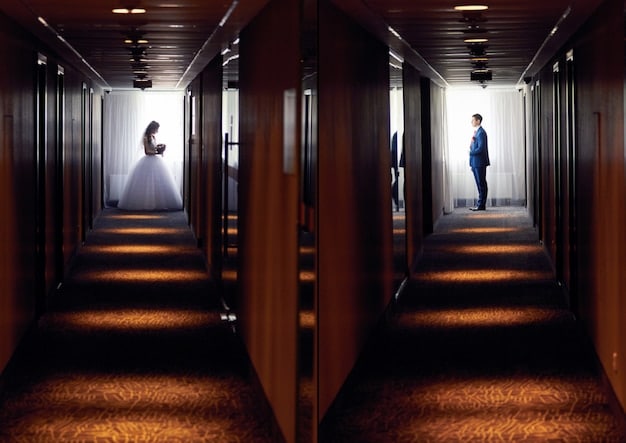Medical Malpractice TV vs. Reality: Separating Fact From Fiction

Medical malpractice cases as depicted on television dramas often differ significantly from the realities of litigation, with shows frequently exaggerating timelines, emotional intensity, and legal procedures for dramatic effect.
Ever wondered how true-to-life those intense medical malpractice storylines on your favorite TV shows actually are? Legal and medical dramas can be gripping, but how much do they mirror the real-world complexities of medical malpractice cases and litigation?
Medical Dramas vs. Reality: Setting the Stage
Medical and legal dramas have captivated audiences for decades, offering glimpses into high-stakes courtrooms and tense hospital corridors. While these shows provide entertainment, their portrayal of medical malpractice cases often takes liberties with the truth. Understanding these discrepancies is crucial to distinguishing fact from fiction.
These shows often condense lengthy legal battles into single episodes, creating a heightened sense of drama and urgency. They also tend to focus on the most sensational aspects of cases, neglecting the more mundane but essential elements of actual litigation.
The Allure of TV Dramas
Television dramas use dramatization to keep viewers engaged, often exaggerating legal procedures and outcomes. This can lead to misconceptions about how medical malpractice cases are handled in real life.
Real-Life Complexities
In reality, medical malpractice litigation involves extensive research, detailed documentation, and a thorough understanding of both medical and legal principles. Cases can take months or even years to resolve.

Misrepresentation of Timelines
One of the most significant discrepancies between television and reality is the portrayal of timelines. TV shows often resolve complex medical malpractice cases in a single episode, which is far from the truth.
In real life, these cases can be lengthy, drawn-out processes involving numerous stages, each requiring time and meticulous attention to detail. This difference is critical in understanding the contrast between on-screen drama and real-world legal battles.
The Quick Fix on TV
TV dramas frequently wrap up cases within a 45-minute episode, complete with dramatic courtroom showdowns and swift resolutions. This unrealistic pacing sets false expectations.
The Reality of Prolonged Litigation
Actual medical malpractice cases involve several stages, including investigation, filing a complaint, discovery, negotiation, and potentially a trial, each of which can last several months. The timeline is far from immediate.
- Investigation and Preparation: Gathering medical records and consulting with experts can take several months.
- Filing a Complaint: The formal process of filing a lawsuit initiates the legal proceedings.
- Discovery Phase: This phase involves depositions, interrogatories, and requests for documents, often spanning many months.
The extended timelines in real cases reflect the thoroughness and complexity required to navigate the legal system effectively.
Emotional Intensity and Personal Relationships
Television often amplifies the emotional intensity surrounding medical malpractice cases, adding personal relationships, conflicts, and romantic interests to the mix. While real cases are undoubtedly emotional, the personal drama is often toned down in favor of legal strategy and procedure.
These exaggerations can mislead viewers about the primary focus of medical malpractice litigation. It is crucial to understand that the legal process prioritizes factual evidence and adherence to legal standards.
Heightened Emotions on Screen
TV shows thrive on high-stakes drama, often portraying lawyers and doctors as deeply emotionally involved in every case, blurring professional boundaries.
Professionalism in Reality
In reality, lawyers and medical professionals maintain a level of professional distance to ensure objectivity, focusing on facts, evidence, and legal arguments rather than personal feelings.

Legal Procedures and Courtroom Dynamics
Courtroom dynamics in medical dramas are often far removed from the structured and procedural nature of actual courtroom proceedings. TV shows commonly feature spontaneous outbursts, dramatic revelations, and over-the-top arguments that would rarely occur in real life.
Understanding the differences between TV portrayals and actual legal processes is essential for anyone seeking an accurate view of medical malpractice litigation.
Dramatic License in Courtroom Scenes
TV dramas frequently use dramatic license to create heightened courtroom scenes, with lawyers making impassioned speeches and witnesses breaking down on the stand.
Adherence to Protocol in Real Courts
Actual courtrooms are governed by strict rules of evidence and procedure, with lawyers meticulously presenting their cases in a structured and professional manner. Emotional outbursts and spontaneous revelations are rare.
- Rules of Evidence: Strict adherence to rules regarding admissible evidence.
- Procedural Conduct: Lawyers must follow specific protocols for presenting arguments.
- Judicial Oversight: Judges maintain order and ensure fairness in proceedings.
The emphasis on protocol ensures that the legal process is fair, methodical, and based on solid evidence.
Expert Witnesses: Fact vs. Fiction
Expert witnesses play a crucial role in medical malpractice cases, offering specialized knowledge to support or refute claims of negligence. However, TV dramas often misrepresent the objectivity and qualifications of these experts. In reality, the selection and presentation of expert testimony are carefully managed to ensure credibility and accuracy.
The integrity of expert testimony is essential to the fairness and validity of medical malpractice litigation. Understanding the real role of expert witnesses helps to demystify their portrayal in popular media.
Misleading Portrayals on TV
TV shows sometimes depict expert witnesses as biased or easily swayed, offering sensational testimony to advance a particular narrative.
The Rigorous Standards of Real Experts
In reality, expert witnesses must meet strict qualifications, provide unbiased opinions based on sound scientific or medical evidence, and withstand rigorous cross-examination.
Ethical Considerations
Ethical considerations are central to both the medical and legal professions. Medical malpractice cases often hinge on whether healthcare providers adhered to the standard of care and whether lawyers acted ethically in representing their clients. TV dramas, however, frequently bend or break these ethical rules for dramatic purposes.
The misrepresentation of ethical standards can create a distorted view of the legal and medical professions. Understanding the actual ethical duties of lawyers and doctors is vital for a balanced perspective.
Ethical Lapses on TV
Television dramas commonly feature characters who engage in unethical behavior, such as tampering with evidence or engaging in conflicts of interest, to create dramatic tension.
Adherence to Ethics in Reality
In reality, lawyers and doctors are bound by strict ethical codes that require honesty, integrity, and a commitment to upholding justice and patient care. Violations can result in severe penalties.
- Confidentiality: Lawyers and doctors must protect client and patient confidentiality.
- Standard of Care: Doctors must adhere to accepted medical standards.
- Conflicts of Interest: Lawyers must avoid situations where their interests conflict with those of their clients.
Outcomes and Resolutions
The outcomes and resolutions of medical malpractice cases on TV often differ significantly from those in real life. TV dramas tend to favor dramatic courtroom verdicts, while many actual cases are resolved through settlements or alternative dispute resolution methods.
Knowing how cases are typically resolved in reality provides a more realistic understanding of the litigation process.
Sensational Verdicts on TV
TV shows frequently end with dramatic jury verdicts, often resulting in large monetary awards for the plaintiffs. These outcomes are designed to be emotionally satisfying for viewers.
Settlements and Alternative Resolutions in Reality
In reality, many medical malpractice cases are settled out of court through negotiation or mediation. These resolutions are often more practical and less emotionally charged than courtroom verdicts.
| Key Point | Brief Description |
|---|---|
| ⏳ Timelines | Cases take months/years, unlike TV’s quick resolutions. |
| ⚖️ Legal Procedures | Strict protocols govern real courtrooms, unlike TV’s drama. |
| 🧑⚕️ Expert Witnesses | Experts must be unbiased and qualified, unlike TV’s portrayals. |
Frequently Asked Questions (FAQ)
▼
Medical malpractice cases can take anywhere from several months to several years, depending on the complexity of the case, the availability of evidence, and the court’s schedule. It’s a protracted legal process.
▼
Expert witnesses provide specialized knowledge to support or refute claims of negligence. They must be qualified, unbiased, and offer opinions based on scientific or medical evidence, helping the court understand complex medical issues.
▼
No, most medical malpractice cases are resolved through settlements or alternative dispute resolution methods like negotiation or mediation. Only a small percentage of cases proceed to trial and a jury verdict.
▼
Doctors must adhere to a high standard of care, which includes providing competent treatment, obtaining informed consent, maintaining patient confidentiality, and avoiding conflicts of interest. These standards ensure patient safety and ethical practice.
▼
Real-world courtrooms are governed by strict rules of evidence and procedure, with lawyers presenting cases methodically. Emotional outbursts and dramatic revelations are rare, focusing on factual evidence and legal arguments instead of theatrics.
Conclusion
While medical and legal dramas offer an entertaining escape into the world of healthcare and law, it’s important to remember that they often diverge from reality. Medical malpractice cases, in particular, are frequently misrepresented for dramatic effect. By understanding these differences, viewers can enjoy these shows while maintaining a realistic perspective on the complexities of medical litigation.





